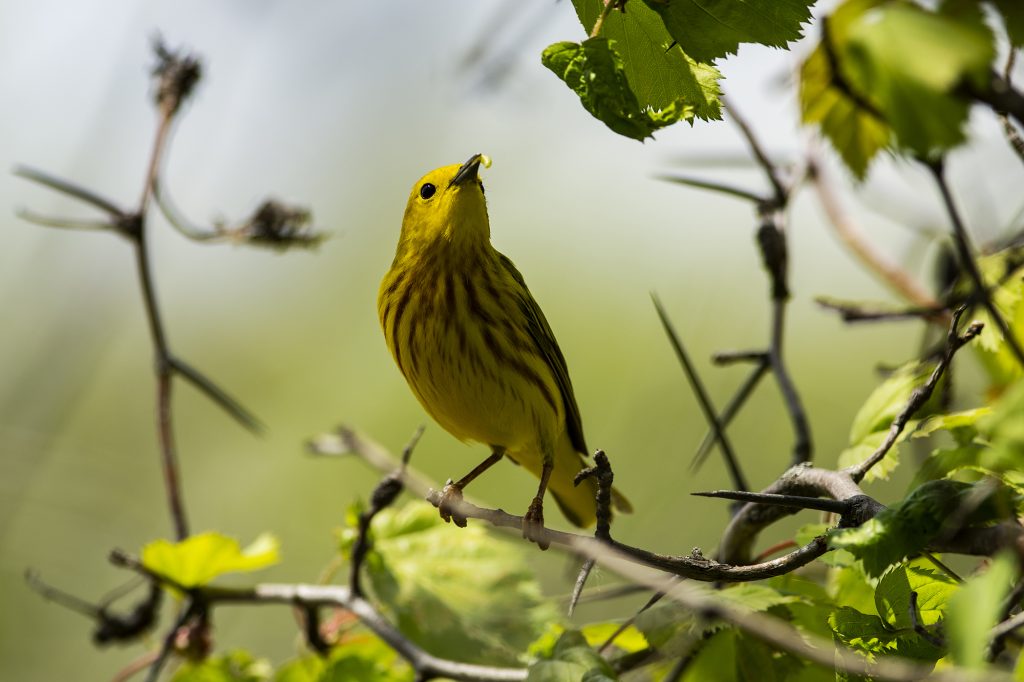
Small bird photography can be a lot of fun. But, it is not easy to get amazing shots without a little bit of thought.
When it comes to camera equipment, any DSLR camera will do. What you may find you need is a bigger lens than what you have been using. You should make sure that you have a minimum of a 300mm lens, though something in the 400mm range is more desirable. All the manufacturers have reasonably priced zoom lenses that are in that range.
Basically, it is difficult to get close to the subject and fill the frame when dealing with the small birds. Though some, like black-capped chickadees, aren’t that scared to come close to humans, others like cardinals, finches, warblers, and blue jays tend to be more skittish. You need to give them room and a telephoto lens will help you accomplish that.
Trying to capture small birds in flight is quite a difficult task. They are small and fast and hard to track. It takes practice to be able to catch them in flight.
A fast shutter speed is definitely needed to catch them in flight, a minimum of 1/1250th second if you want to freeze the action, which is more desirable.
However, when it comes to small bird photography, photos of the birds perched in branches in the trees are also quite desirable.
To do this, you may need to use seeds to attract the birds. A good all-around seed to use is black sunflower seeds which attract most types of small birds.
What we want to avoid is photos of the birds at the feeders, it takes away the natural feel of the photo. If you are setting up a feeder in your backyard try to find an area that is close to small trees and bushes where the birds will land first before going to your feeder.
If you don’t have a backyard to attract birds, try local conservation areas or parks where people tend to go and feed birds. They will be more accustomed to people putting seeds out. They will probably also allow you to be closer to them as they feed.
When going to the park, you want to put the seed out in an area that is close to the trees and bushes, the birds will land there before going to get the seed.
You must be fairly mobile when doing this technique, using a tripod is not recommended, using a monopod to help steady a larger lens is better. Though many photographers try to work with the larger lens handheld giving them the most mobility when it comes to photographing the small birds as they gather closer to the feeding area.
If you have decided to use the lens without support, remember to increase your shutter speed to make sure you don’t get camera shake. A good rule of thumb is setting the shutter speed to 1/the focal length of the lens, for example, a 400mm lens you should shoot with a minimum of 1/400th second. Though, a minimum of 1/500th second is highly recommended.
Make sure you focus on the eye of the bird, which can be difficult at some times, autofocus will work well, but, it helps if you have a lens where you can switch to manual focus with one touch. You will find that you need to fine-tune your focus to get the eyes in focus.
These few tips should help you to be successful in photographing small birds. Enjoy your time of it, and be aware that many small birds are very fast to move.
Happy birding!